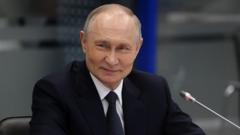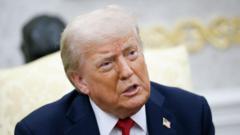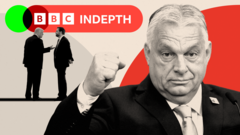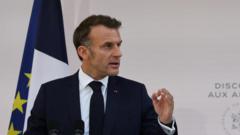In a notable return to military support for Ukraine, former President Donald Trump has unveiled a comprehensive weapons deal aimed at enhancing Kyiv's defense capabilities amid ongoing hostilities with Russia. During an event at the White House, Trump confirmed plans for the U.S. to sell weapons to NATO allies who, in turn, will supply them to Ukraine. This deal, which involves "billions of dollars' worth of military equipment," is seen as a critical development for Ukraine's defense.
Trump's New Weapons Pledge Signals Support for Ukraine's Defense
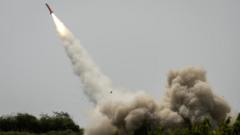
Trump's New Weapons Pledge Signals Support for Ukraine's Defense
Former President Donald Trump announces a significant weapons deal for Ukraine, aiming to bolster its defense against Russian aggression.
Trump indicated that the package would likely include additional Patriot missile batteries, significantly expanding Ukraine's current capabilities, which are limited to a few operational systems. He noted that at least one NATO member would soon provide a substantial number of Patriot systems to Ukraine, enabling the country to strengthen its defense against Russian missile attacks. NATO Secretary General Mark Rutte, joining Trump at the announcement, emphasized the package's breadth, which includes not only air defense systems but also extensive supplies of missiles and ammunition.
This announcement comes on the heels of a tumultuous period, notably a recent suspension of military aid from the Pentagon, which had caused widespread concern in Ukraine. Trump attempted to downplay the earlier halt, suggesting it was a strategic pause in anticipation of the new deal. As part of the agreement, NATO will be responsible for financing the supplied military equipment, alleviating some of the financial burden from the U.S. government.
Rutte, who has been instrumental in securing NATO's commitment to increased defense spending from European allies, revealed that several countries—including the UK, Germany, and Sweden—are interested in participating in the military support initiative. This initiative is reportedly just the beginning, with more military assistance expected to follow.
In a separate but significant development, Trump issued a challenge to Moscow, threatening 100% tariffs on Russian goods and energy if no ceasefire agreement is reached within 50 days. This ultimatum aims to apply economic pressure on Russia and its trading partners who continue to engage with the Kremlin.
As the political landscape shifts, this deal represents a pivotal moment for U.S. engagement in the Ukraine conflict, a notable departure from Trump's previous approach of favorably viewing Putin. While the focus now turns to how quickly this agreement can impact Ukraine's ongoing battle, the 50-day window may feel prolonged for those facing daily attacks.
With this announcement, Trump seems poised to ensure that Ukraine remains supported through the vital defense pipeline, contingent upon cooperation from NATO allies in financing the effort.
This announcement comes on the heels of a tumultuous period, notably a recent suspension of military aid from the Pentagon, which had caused widespread concern in Ukraine. Trump attempted to downplay the earlier halt, suggesting it was a strategic pause in anticipation of the new deal. As part of the agreement, NATO will be responsible for financing the supplied military equipment, alleviating some of the financial burden from the U.S. government.
Rutte, who has been instrumental in securing NATO's commitment to increased defense spending from European allies, revealed that several countries—including the UK, Germany, and Sweden—are interested in participating in the military support initiative. This initiative is reportedly just the beginning, with more military assistance expected to follow.
In a separate but significant development, Trump issued a challenge to Moscow, threatening 100% tariffs on Russian goods and energy if no ceasefire agreement is reached within 50 days. This ultimatum aims to apply economic pressure on Russia and its trading partners who continue to engage with the Kremlin.
As the political landscape shifts, this deal represents a pivotal moment for U.S. engagement in the Ukraine conflict, a notable departure from Trump's previous approach of favorably viewing Putin. While the focus now turns to how quickly this agreement can impact Ukraine's ongoing battle, the 50-day window may feel prolonged for those facing daily attacks.
With this announcement, Trump seems poised to ensure that Ukraine remains supported through the vital defense pipeline, contingent upon cooperation from NATO allies in financing the effort.



